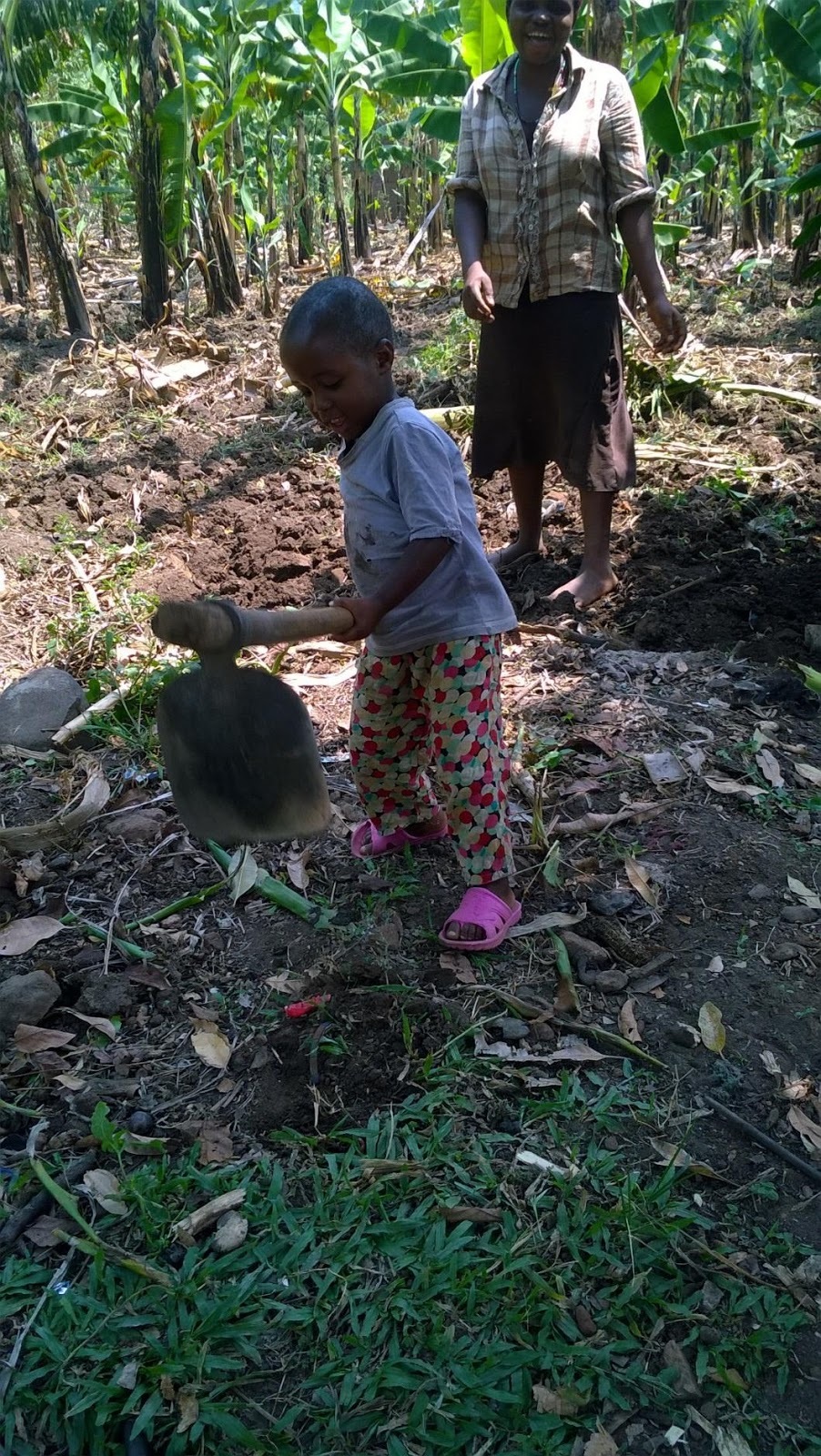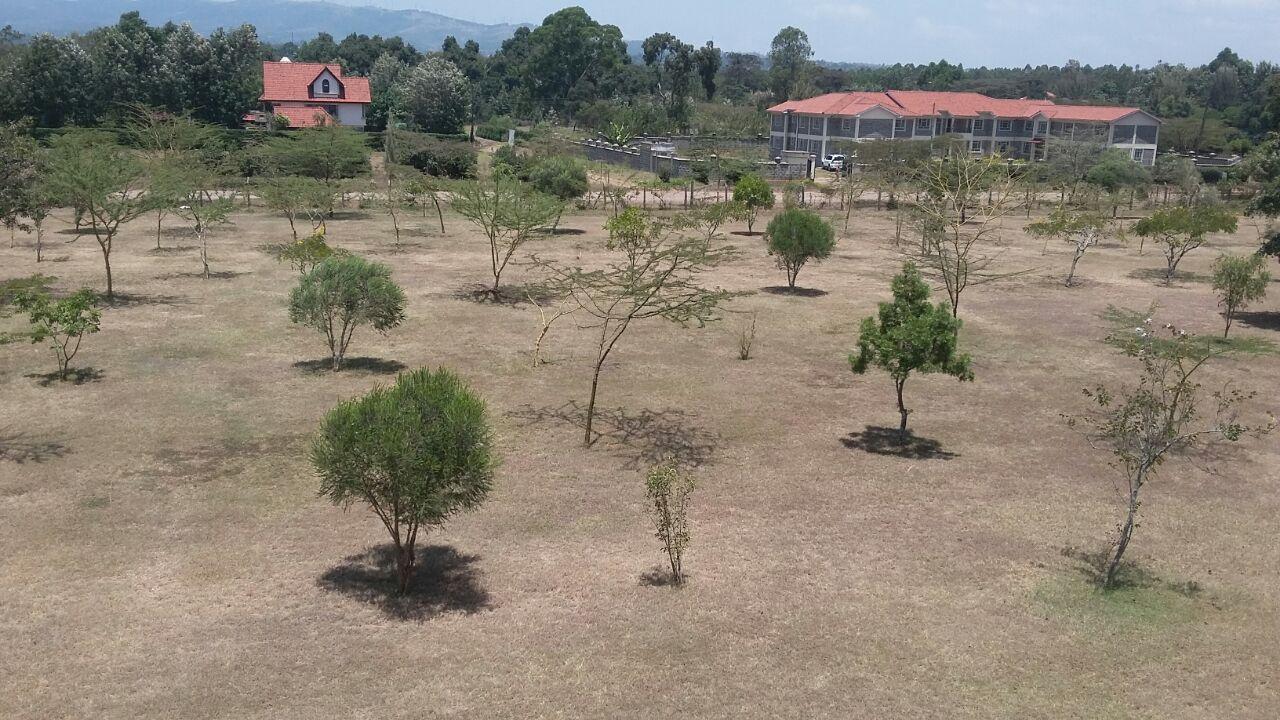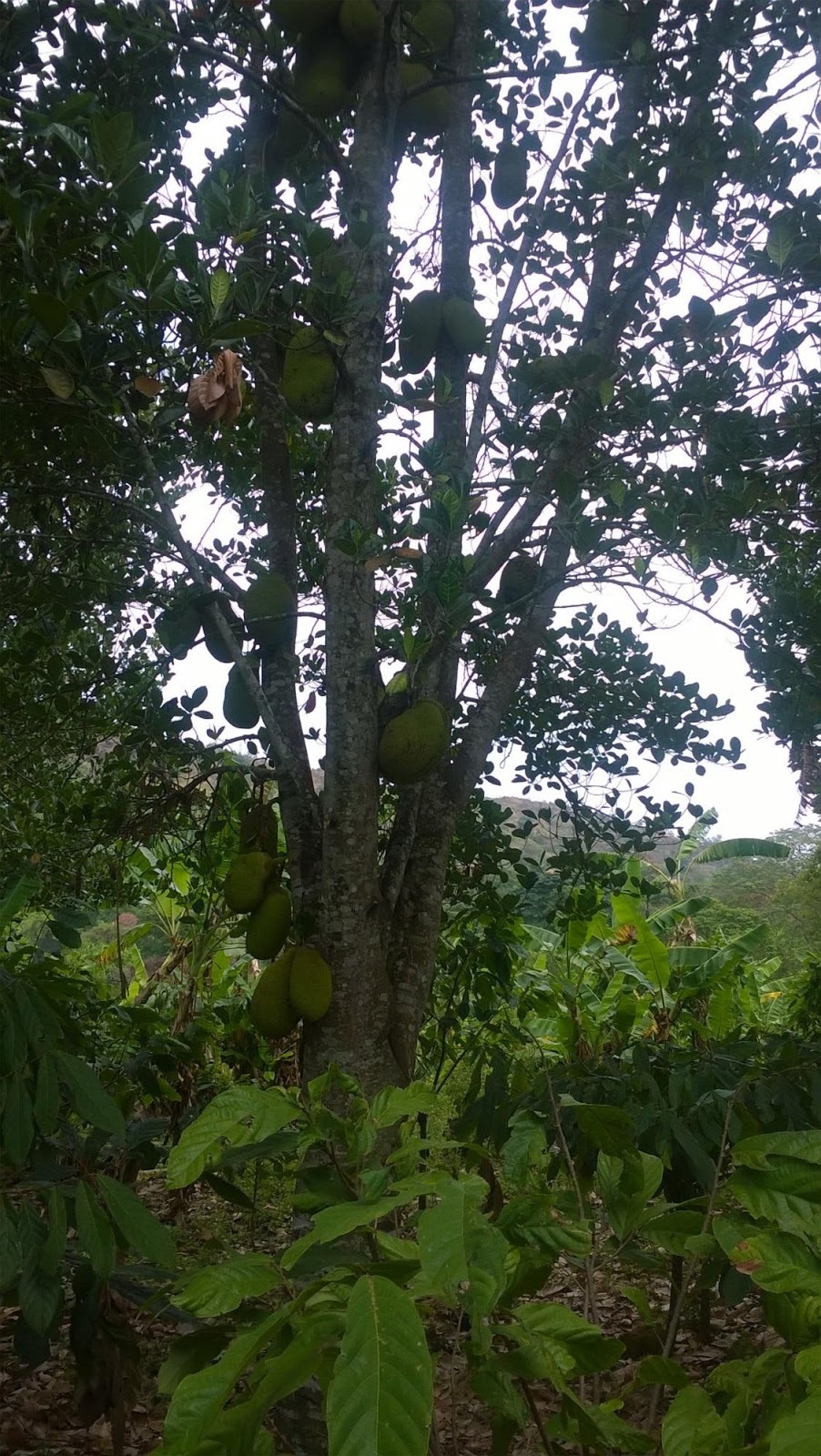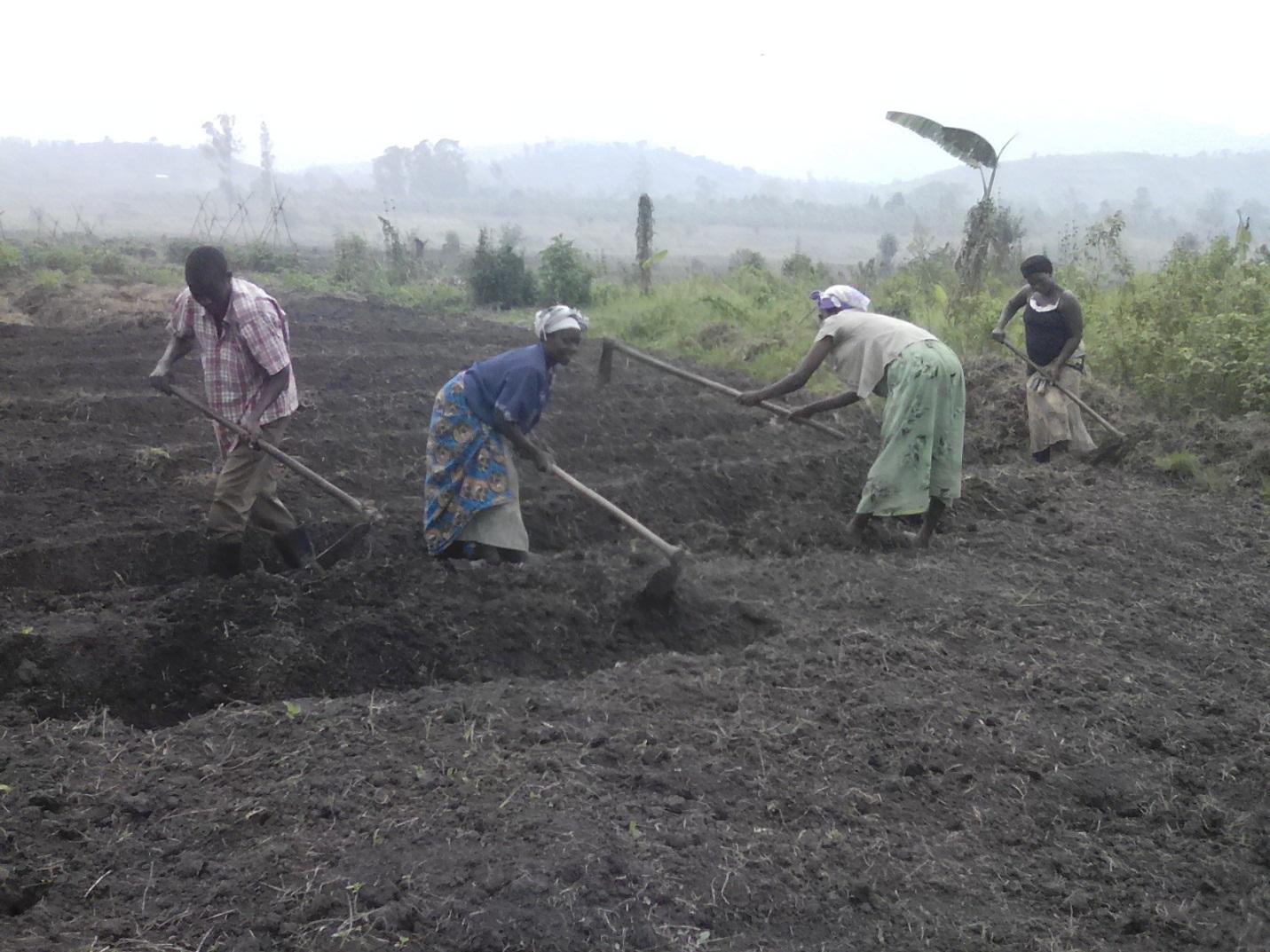With increasing demand for land for settlement, agriculture and industrial development has resulted in the destruction of natural resources and forests are no exception. The FAO estimates that global net forest loss is 3.3 million hectares per year, much of which is to make room for agriculture. More so for one out of every three people worldwide wood is the major source of energy for cooking food and sterilising water.
Households turn to their nearby forests for firewood and charcoal and hence continue to deplete the forests. Three billion people worldwide rely on wood, coal, charcoal or animal waste for cooking and heating according to UN facts and figures. In Uganda, where over seventy percent of the population is employed in agriculture related activities, it is very pertinent to encourage small holder farmers to grow crops that do not necessarily require cooking as part of its preparation. This will reduce demand for fuel wood and therefore save the remaining forest resources from depletion. And some of such crops are tree crops!

In the photo: In rural Uganda, it is not uncommon for children as young as three years old to start acclimatising themselves with the hand hoe Photo Credit: Muhindo Crispus Baguma
Tapping the participation of smallholder farmers
Farmers in developing countries are becoming desperate for quick returns when it comes to investment in natural resource restoration. The Payment for Ecosystem Services (PES) fund that was first launched in Uganda in 2015 had great success in ensuring that farmers minimise cutting down their trees while earning incentives without much delay. However this did not benefit those farmers who had small pieces of land where forestry would not materialise. For example, in Eastern Uganda PES benefited only those people who had sizeable pieces of land, leaving the poor people poorer according to an evaluation by Innovations for Poverty Action (IPA).
In most times when trees are felled in a given area and not replaced immediately there will be changed land use, for example, into garden or home. Integrating the concept of crop tree growing into programs concerned with forest restoration can motivate small holder farmers to take up planting trees for food supply and sale of excess produce. In order to boost the harvest of fruits and nuts the farmers will keep planting more of these trees and we shall end up having a kind of food forest – and the trees are all we need! In so doing we shall have recovered part of the standing trees population in the wake of changing land use.
In Uganda and other African countries real estate dealers buy large pieces of land, sometimes forested, and split them into smaller plots of 100by50ft for sale. If an acre of formerly forested land has been split into eight residential plots and each household is encouraged to plant four date palms (Phoenix dactylifera) per plot of land, for example, we shall end up having at least two trees per acre of estate. And in about five years the households will start harvesting dates for food while the various date palm trees on the estate collectively reduce atmospheric temperature and the level of pollutants resulting from industrial activities. FAO forestry reports indicate that properly placing [fruit] trees around buildings can reduce air conditioning needs by 30% in urban settings.
Additionally because fruits from tree crops only need washing without necessarily cooking, the households can save on the fuel bill for cooking so that the funds are utilised for other domestic requirements like paying school fees and medical bills. By eating fresh fruits the family also saves on time that would have been spent on searching for firewood or cooking in the kitchen and now utilises it for other social and economic demands such as fun time with family, going to places of worship or doing homework for school going children. However, this is not to completely discourage families from cooking food whenever it is available and necessary.
How do trees crops uniquely contribute to food security?
Fruit and nut trees are planted once and for all, and when mature they start to bear fruit for a very long time. Take an example of a jack tree (Artocarpus heterophyllus) which can bear over one hundred fruits per annum and remains productive for over one hundred years. There has never been any better fruit (food) security, that lasts this long, than this! Even so some leguminous trees such as walnut and macadamia nut trees endlessly fix nitrogen from the atmosphere into the soil hence improving soil fertility for the surrounding crops to benefit. This reduces the cost of purchasing commercial fertilisers every year such that the farmers can focus their effort on producing more food. Other highly productive tree crops include Date palm with over 4,000kg/acre of dates per annum and Pecan trees giving 1,000kg/acre per annum. An acre of dates yields more food than corn or wheat fields.
Healthy nutrition
In some cases excessive dependence on cereals has led to malnutrition as many families feed on starch rich cereals for their daily body energy demands. Cases of obesity are on the rise even in developing countries and excessive feeding on starchy food is among the likely causes. Equally so, insulin resistance is on the increase as more cases of type 2 diabetes are being reported world over. Fruits and nuts from the tree crops would be a wonderful addition to household diets for a healthier and more vibrant family! According to key facts of UN healthy diet eating at least 400 g, or 5 portions, of fruits and vegetables per day reduces the risk of Non Communicable Diseases, and helps ensure an adequate daily intake of dietary fibre.
Climate change adaptation, mitigation and resilience
Our profit-driven, industrial agricultural systems and practices have taught farmers to take on growing such annual crops as cereals for quicker returns since they usually mature within three months. As J. Russell Smith puts it in his book TREE CROPS – A permanent Agriculture plants, cereals are weaklings and need coddling and weeding. They have a limited coping range whereby in case of unstable climatic conditions such as changing rainfall patterns, these cereal crops will die out or fail to recover when the rains come late. However tree crops are often hardy and tolerant and once their roots are well established, they are less likely to be affected by changing rainfall patterns.

In the photo: trees can survive drought spells and regain their vigour when rains come Photo Credit: Muhindo Crispus Baguma
Even in periods of little or no rainfall, the tree “can wait and use the rain when it comes”. With the deep rooting system they have the capacity to utilise the water below the subsurface unlike the roots of most annual crops. This makes tree crops, such as walnut, mangoes, filbert, date palms, pecan, hickory and others a better option as far as adaptation and resilience to drought is concerned. When managed sustainably, forests (including tree crops) can absorb about 10% of global carbon emissions, thus mitigating climate change and its impact on food production.
Annual crops require constant tilling of the land when clearing land, planting, weeding and sometimes harvesting. This must be done for every growing season! Despite efforts by Ugandan government to call for minimal tillage techniques such as basin cropping there has been low adoption among farmers. Tree crops are planted once and do not require constant tilling once they have established themselves. Therefore promoting the growing of tree crops may go a long way in reducing constant tillage and soil disturbance hence reducing emissions form volatilisation of organic soil carbon.
Soil erosion
When annual crops are grown on hilly landscapes the necessary breaking up of the soil makes the earth very prone to soil erosion when rain comes. When plough does its work at an angle instead of on flatland we may look for trouble when rain falls. Smith describes this as “Man taking flatland agriculture to the hills”. Planting corn in the most efficient way for destroying the farm that is not made of level land. There is a trend of hilly areas quickly tuning into degraded land. The cycle goes from forest-to-garden-to-dig/till-to-desert under most plough agricultures. Once the soil is lost, getting it back uphill is near-impossible and like Smith puts it “A burned city can be rebuilt. A field that is washed away is gone for ages.” Hence the old saying after man the desert. On hilly areas there ought to be no tilling to let the earth cultivate itself by means of plant roots and the activity of microorganisms, small animals and earth worms. The root system of tree crops holds the soil together while the shoot system reduces the force with which raindrops hit the ground hence managing soil erosion.

In the Photo: Constant tilling of land is common with growing of perennial crops Photo Credit: Muhindo Crispus Baguma
Lenience towards fruit crops
I carried out a survey in Kasese a western district of Uganda to establish how lenient or protective families are towards fruit crops. In situations where a tree had to be cut down, family members showed more lenience towards a jack tree compared to other non-fruit bearing trees in the garden such as bark tree, acacia species or eucalyptus. It was discovered that family members are more likely to protect such trees as jack tree and other fruit and nut trees because they directly benefit them by providing food. This means fruit and nut trees appeal more to family members and are likely to survive any attempts of felling for fuel, construction materials, among other uses. Building on this leniency, encouraging farmers to plant more fruit and nut types of trees may increase their chances of survival and generally boost the population of standing trees in the long run.

In the Photo: A jack tree can bear more than one hundred fruits in a year Photo Credit: Muhindo Crispus Baguma
Is tree planting new to Africa’s traditions?
One might wonder whether traditional Africans knew how to plant trees before the introduction of tree nurseries through modern agriculture. The Nande/Bakonzo of western Uganda and Eastern Democratic Republic of Congo used to plant a bark tree to mark a grave of their deceased. At every burial a tree was planted and eventually there were very many trees in every village. These trees would later mature to give shed, forage, clothing, medication, wood in addition to working as memorial sites for their deceased relatives.
We want to build-on from such a background of planting trees and only modify it to include tree crops such as walnut or jack trees. Currently most Ugandans want to bury their deceased in beautiful graves made of concrete and expensive tiles which is very unfortunate in the wake of limited land availability. How about if people planted a fenne on the graves of their loved ones? It will surely take some time to have the mindsets of everyone changed since it has a cultural implication but it is possible. In this way the next generation can enjoy the fruits from burial spots of their ancestors and even go ahead to establish their own food forests during their free time without having to wait for burial ceremonies.
Where do we want to be?
Policy formulation to support crop trees.
Can we have policies that, for example, require every homestead to plant three crop trees around the house? By consuming fruits produced on your own plot of land you are reducing demand for these fruits from another piece of land somewhere. You are avoiding the long transportation routes and energy (fuel) burned in moving the fruit the costs which are actually paid for by the final consumer. As Bill gates put it in 2012 “We can help poor farmers sustainably increase their productivity so they can feed themselves and their families. By doing so they will contribute to global food security”
But do we always have to wait for government’s intervention?
In Uganda, the government is currently supporting farmers with perennial crop inputs such as seedlings of tea, citrus, coffee under a programme dubbed Operation Wealth Creation. Most of these crops are however meant to generate income and not actually improve food security.
In the meantime community effort can build on this government effort by mobilising farmers to plant tree crops that can provide them with food on table on a daily basis. Short of this we are always going to rely on government to go through the long bureaucracy and procurement processes before appreciable food security and environmental restoration can be achieved.
Tree crops can be planted along sidewalks of churches, district administration offices, state house, community halls, mosques, markets, and other public places; allowing people to gather fresh food, as they go about their way. Both are good ways to establish community food security. Some of the food crop suggestions may include mangoes, date palms, apples, jackfruit, papaya, fig, pears, peaches, plums, oaks, mulberries, guava, walnuts, apricots and chestnut as listed in Toolbox for sustainable city living by Scott Kellogg and Stacy Pettigrew.
This is not to exclusively discourage the growing of annual crops. However it is to simply emphasise the need to diversify food resources and household income. Because tree crops require about five years to mature, making an abrupt switch from growing annual crops to tree crops would leave many families hungry for the initial stages of tree crop growth. A gradual process is required whereby farmers are rolled out without completely stopping the growing of perennials.
Having noticed that farmers are at the forefront of natural resource depletion, we need integration of the ministries of environment and agriculture. Why would these two continue to work as separate entities yet farmers are the custodians of the earth? A world where everyone practices environment-friendly agriculture is where we want to be.










